Google Photos is an app where you can back up and browse your entire photo library from almost any device. Many people have drawn similarities between Google"s Photos app and Apple"s Photos app, which was introduced in iOS 7 and subsequently arrived on the Mac, so we"re going to compare the two and see exactly how similar they are, and which is the best for you.
Google Photos is a free download for iOS so you can run it on your iPhone or iPad - it"s not just for Android users.
For some related comparisons between Apple and Google products, take a look at Apple Maps vs Google Maps and Apple Music vs Google Play.
Organisation and search
The way that both the Apple Photos and Google Photos apps organise your photos is very similar. Apple organises your photo library using smart groups based on time and location called "Moments", "Collections" and "Years".
Moments are groups of photos all taken over the course of a day (occasionally you"ll see a day split into two Moments). Collections are photos taken over a number of days or weeks: you"ll see a selection of photos taken around the same time, with some location data if you"ve got location services turned on. Years are an overview of photos taken over the course of the year (obviously).
Tapping at a point on the Year view will take you to the Collection of photos from around that time, tap again to be taken to the Moment, which will be all the photos from that particular occasion.
On Apple"s app you can also sort your photos into Albums, or tag a photo with a heart to automatically add it to your Favorites Album.
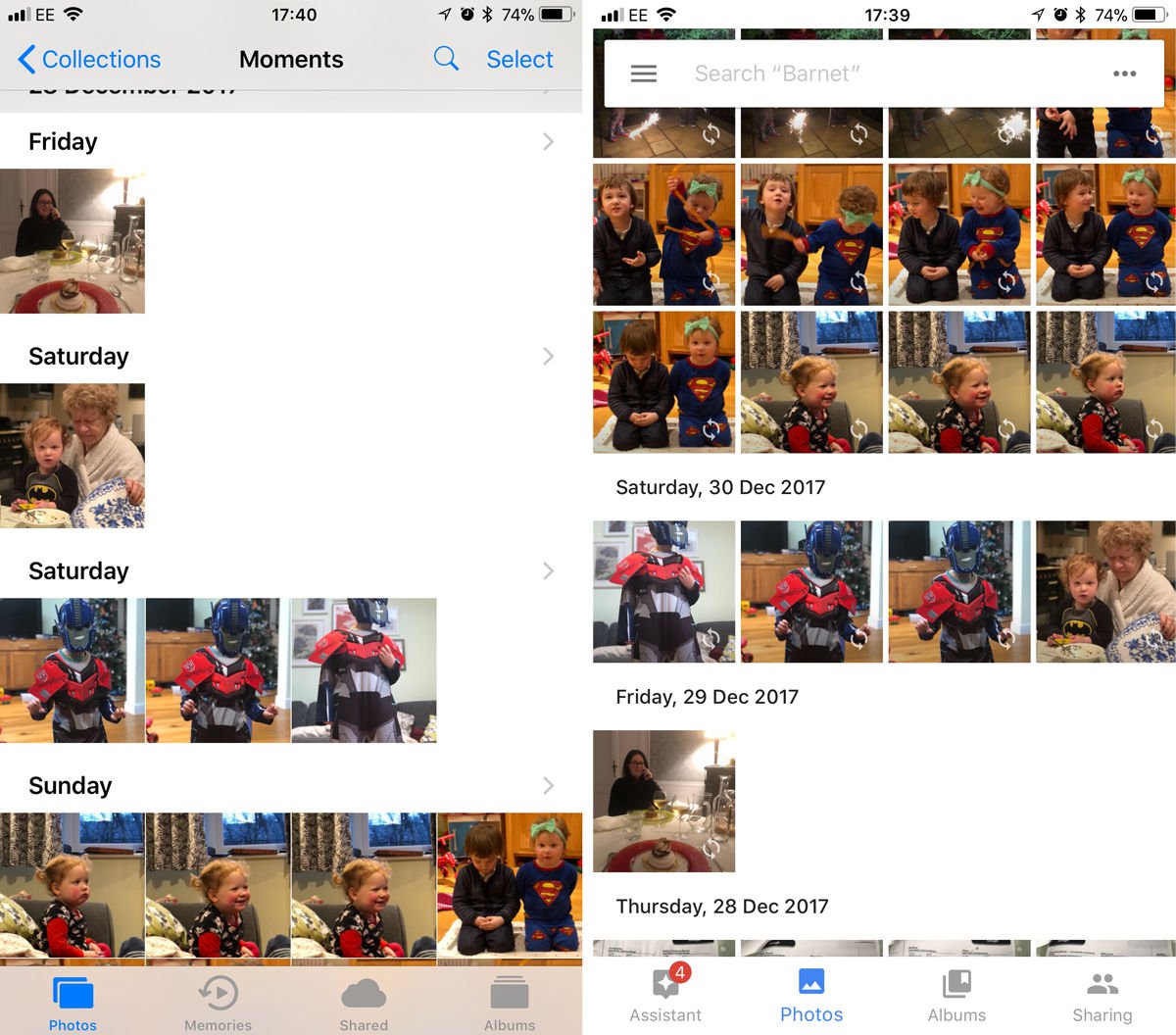
While the two apps may look somewhat similar, Google Photos takes a different approach to photo organisation. The order is reversed, for one thing: the most recent photos appear at the top and you swipe up to see more.
If you"re viewing the day"s photos in Google and want to see all the photos you took in a month, pinch to zoom out. Want to zoom in on a particular photo? Unpinch to zoom into it. If you zoom out from a photo back to the day, or month view, a side bar appears that lets you quickly scroll back in time by tapping, holding and dragging the side bar to a specific month. This side bar is slightly more precise than swiping up and down on the Apple app.
Search
However, that"s not the impressive part of Google Photos organisation - it automatically analyses your photos and adds them to categories such as "Cats" or "Skylines" that you can quickly access.
It doesn"t stop there, either, as you"re also able to keyword search to find a photo. For example, if we want to view all photos containing phones, type "gadgets" into the search bar and Google Photos should display every photo in your library that has a gadget in it. It"s not 100 percent accurate yet, but we"re surprised (and a little creeped out) by how well it works.
The Google app also sorted all our photos of cats into a folder for us: we didn"t even have to ask.
Apple also has a search feature within its Photos app, and this works well. Since launch this has evolved; it used to be limited to locations and dates, but now you can search for things as diverse as chairs, chimneys and Christmas trees.
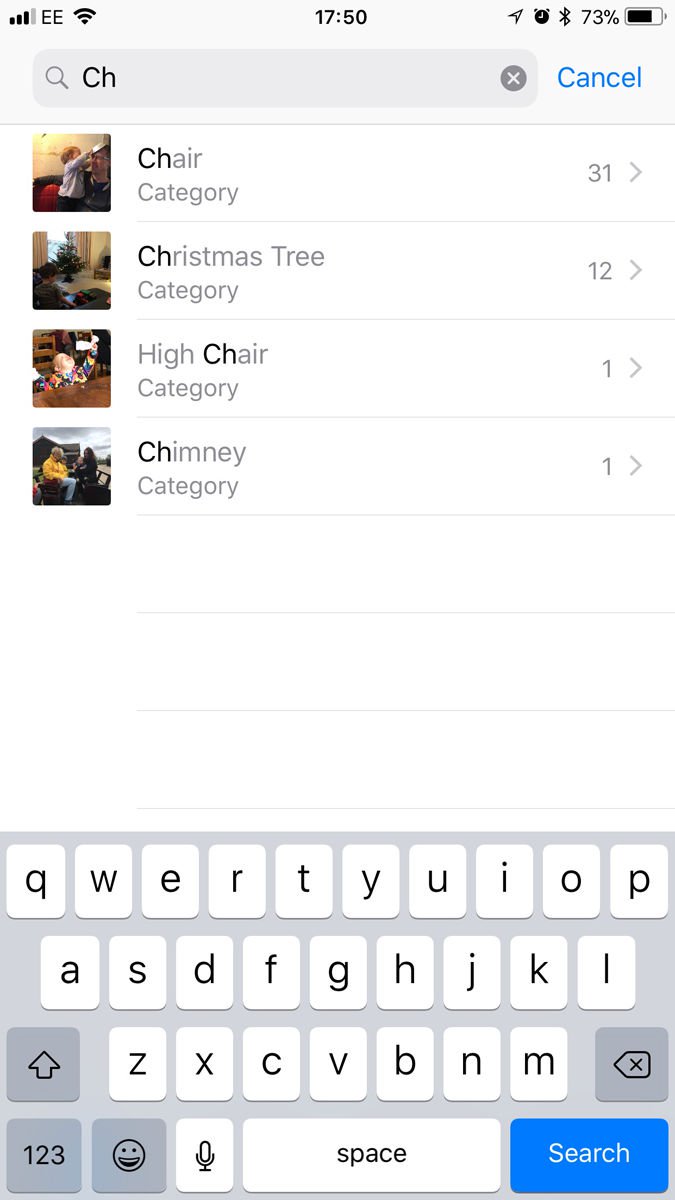
Editing
Let"s move on to another important aspect of any app that handles photos: editing. More specifically, photo editing. Google offers various editing tools to help spruce up your photos, including the standard "auto enhance" and a number of Instagram-esque filters for those of you that use them. It also offers tools to tweak the light, colour, "pop" (sharpness - we think) and vignette, however these are applied using sliders and offer no manual input.
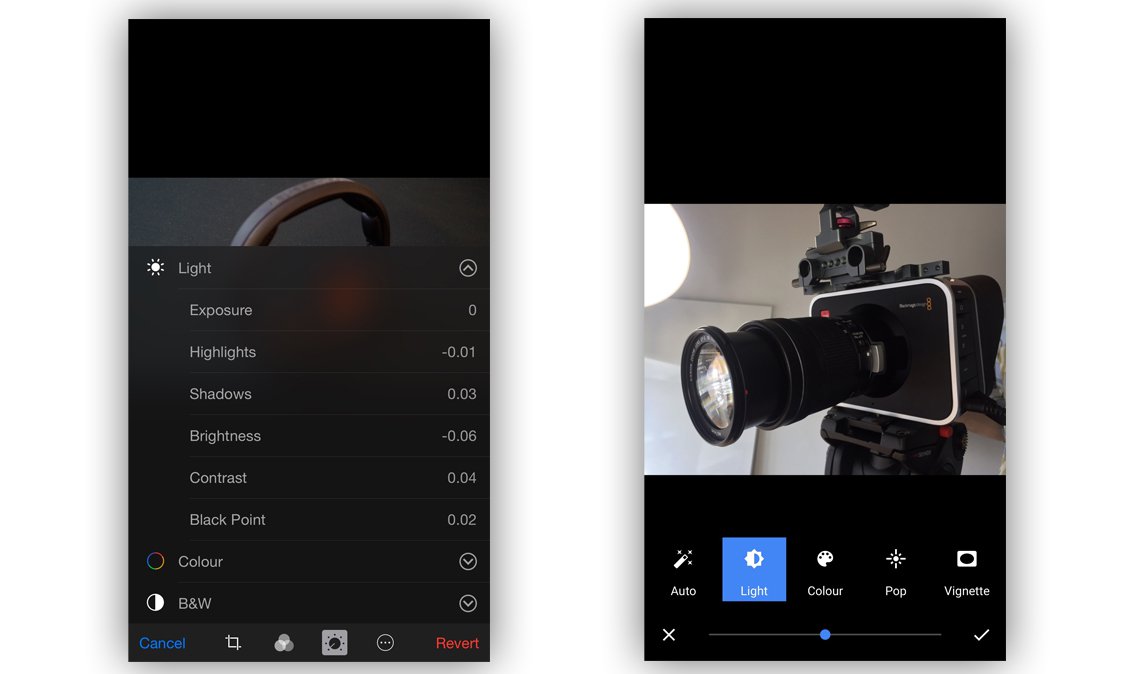
Apple also offers auto enhancement, filters and controls over colour and light but takes it a step further than Google. As with Google Photos, edits can be applied using sliders - a consumer friendly way to enhance photos, and is perfectly acceptable for many people. However if you"re into photography and want extra functionality to enhance your photos, that"s also available. If needed, you can manually and precisely adjust:
- Exposure
- Highlights
- Shadows
- Brightness
- Contrast
- Black point
- Saturation
- Cast
If that"s still not enough, Apple has one more trick up its sleeve. Not only do Apple offer a set of tools built into the Photos app but you can edit photos within the Photos app using third-party editing tools (such as those used in Camera Plus).
That"s not it from Google Photos, though, as it has another impressive feature to offer. The analysis of your photos doesn"t only result in them being sorted into smart folders, as Google will also analyse them and suggest edits for you. These include GIFs, videos, collages and edits based on your photo library. If you like an edit that Google suggests, saving it won"t replace the original - it"ll be saved as a new file, accessible via the "Creations" folder within the app. These suggestions can be hit and miss, but we"ve also had some amazing GIFs and videos automatically generated for us.
We were initially concerned that these extra versions of our images would quickly clog up our iPhone memory, but all these versions are saved in the cloud (which means you need a web connection to view them). And there is no fear that the cloud space will quickly fill up either - Google gives up unlimited space for your photos (more on that below).
Incidentally, Apple doesn"t save extra copies of your adjusted images, it just saves the adjustments you have made in a file applies them to the photo when you view it.
Sharing
Sharing our photos online has become a daily occurrence thanks to the likes of Facebook and Instagram, so how do the two mobile titans handle photo sharing? iPhone users will be aware of the Share Sheet (part of iOS that appears in many different apps - it"s the icon that looks like a square with an arrow coming out of it). The Share Sheet displays a list of social networks and apps that you can share the selected file with (in this case, photos). This is what"s used primarily in the iOS version of Google Photos and Apple Photos, and performs as you"d imagine - simply tap the icon of the social network that you want to share the photo with. Nice and easy.
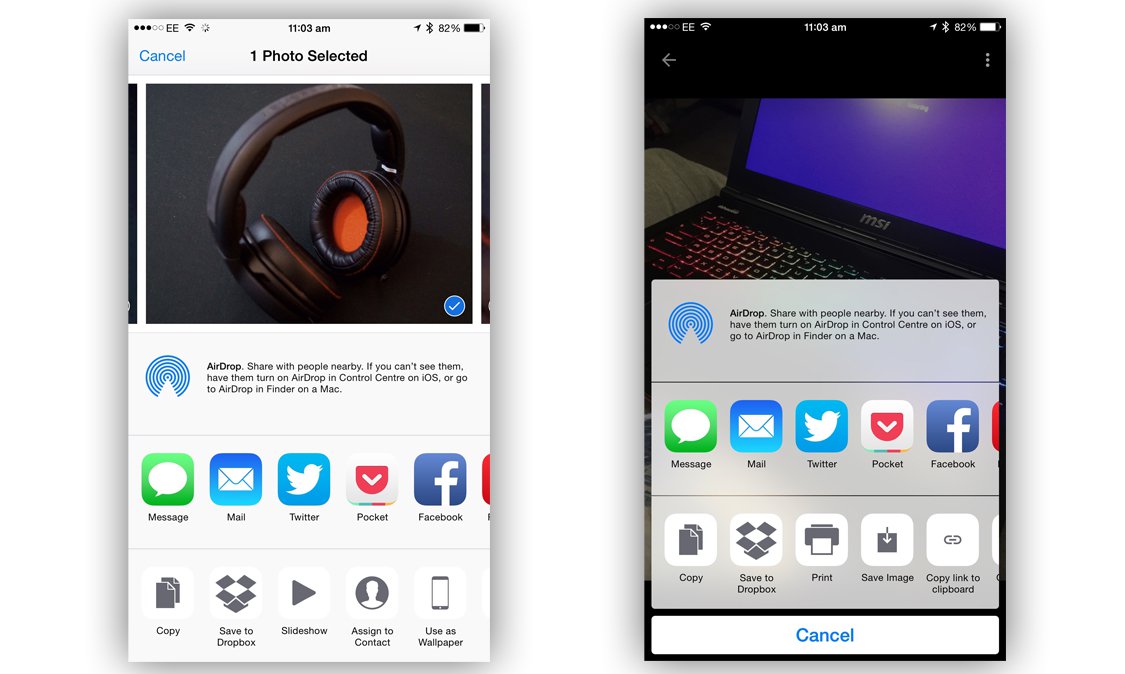
Apple also offers iCloud Photo Sharing via shared folders within the Photos app. You simply create a folder and add the email address of the person(s) you want to share the album with. Once created and shared, all members will be sent a notification whenever new photos are added. They can also add photos to the album. You can store up to 5000 images in a Shared Album. iCloud Photo Sharing also lets you create a pubic link to an album that anyone can view from a web browser (more on iCloud Photo Sharing below).
By default Apple stores your Photos in iCloud in My Photo Stream - you can store the last 1000 images, or 30 days worth of images for free. These images can come from any of your devices - even photos you"ve downloaded onto your Mac from your camera. If you want to store more photos you"ll have to pay though - Apple charges 79p a month for 20GB or £2.99 a month for 200GB for iCloud space.
This is the main thing that sets Apple Photos aside from Google Photos. Google Photos backs up your entire library to its servers, offering you unlimited space for free.
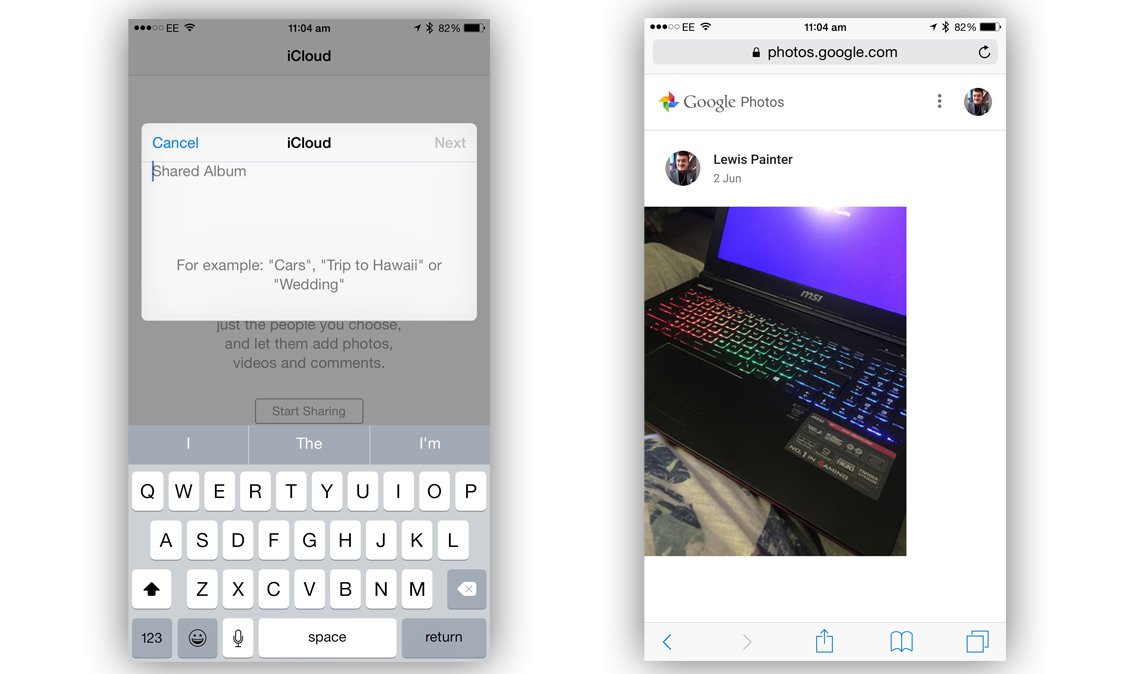
If you choose to share images with someone that person doesn"t need the Google Photos app, as the photos are accessible via web browser. The person in question can browse the photos and save them to either their device or Google Photos stream. If you want to revoke access to a link, simply delete it from the "Shared Links" menu from within the Google Photos app.
Accessing photos
Apple"s Photos app is available on every iPhone, iPad and iPod Touch running iOS 7 or later, and every Mac running OS X 10.10.3 as well as via iCloud on Windows. If you are on iOS 8.1, you also benefit from iCloud Photo Library, which means that if you have sufficient storage space on your iCloud account, your photo library should be synced between your Mac, Phone, iPad and iPod Touch and available on each device.
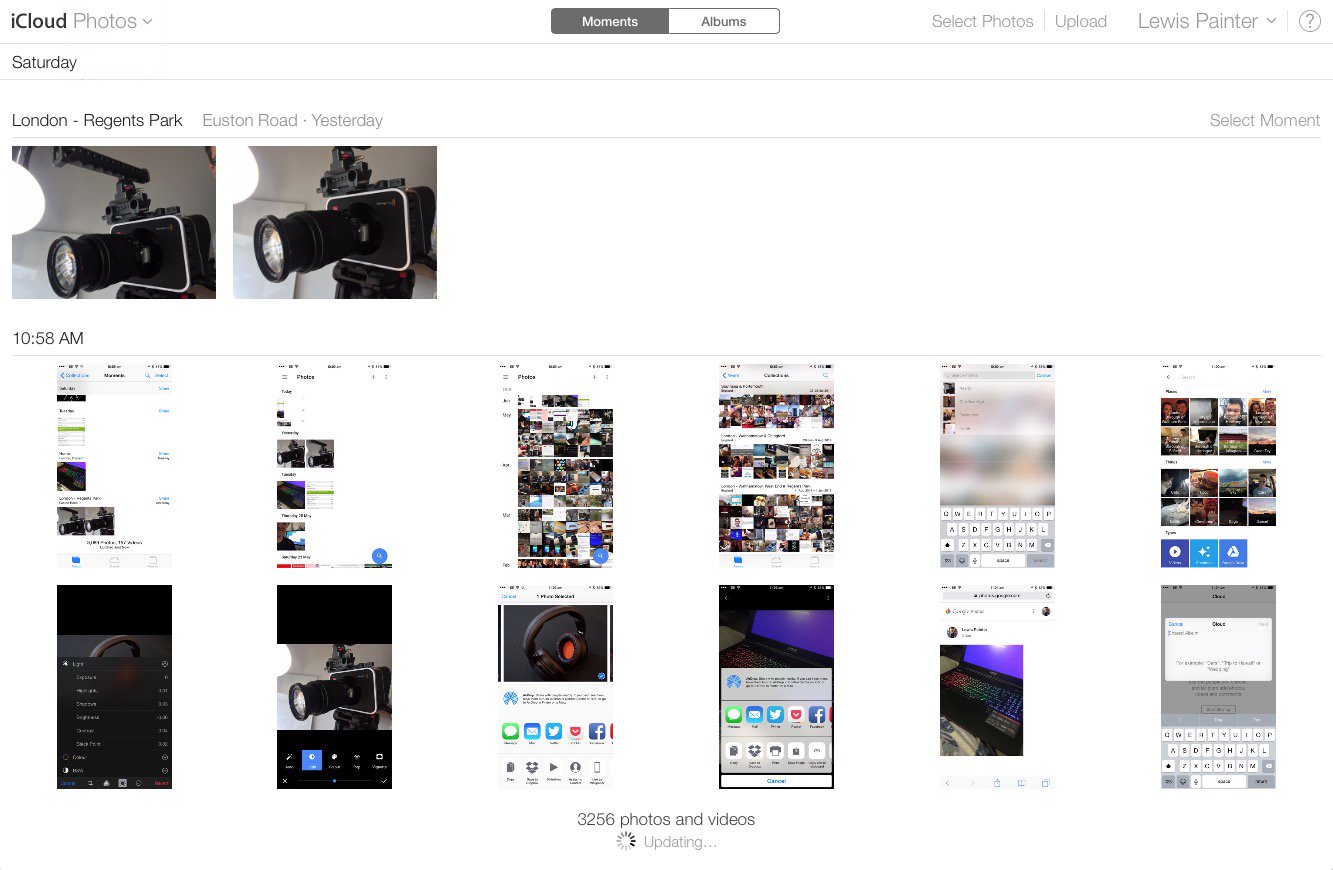
You can also access your iCloud Photo Library via the iCloud website, www.icloud.com. From here, log in with your Apple ID and click the Photos icon to access your complete photo library. You can download old photos as well as upload new ones through the iCloud website - very handy for use on a public computer.
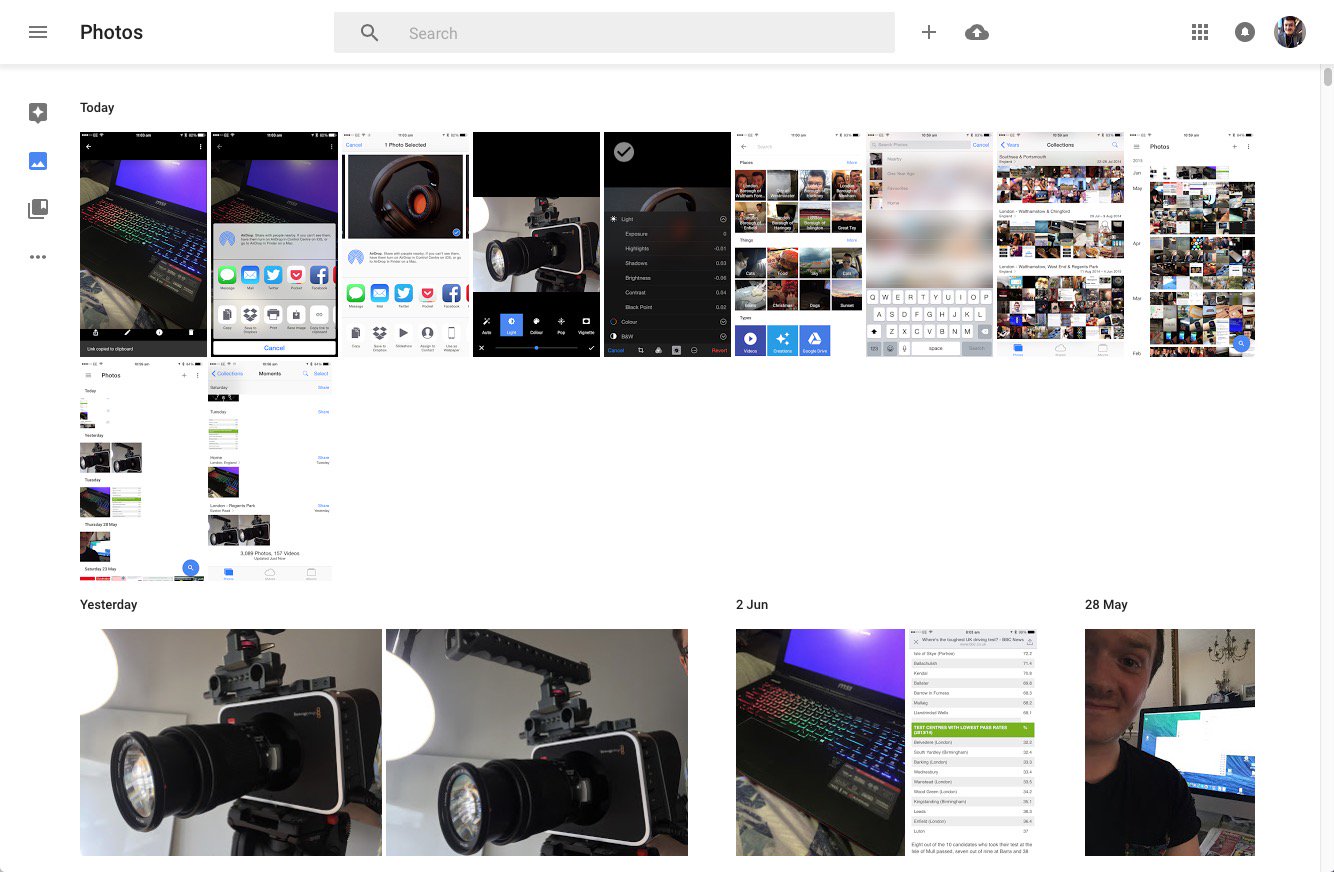
So, what platforms is Google Photos available on? It currently has an iOS and Android app, but no word yet on the Windows Phone platform. Much like Apple"s iCloud, Google Photos is also available via web browser at photos.google.com where you can view your photo library, download and upload new images.
It"s worth noting that the PC/Mac uploader does just that - upload photos. Unlike Apple Photos that has a Mac counterpart, there"s no native app for PC or Mac that allows you to browse your Google Photos library.
Cloud storage
Let"s talk storage, the most important factor in both Apple Photos and Google Photos. Apple"s iCloud is a cloud service that backs up not only your Photos, but your entire phone. The company offers 5GB of free storage, which for some users is okay, but others need more - which you have to pay for. 20GB is a reasonable £0.79 per month but if you need more than that, you"re forced to pay £2.99 per month for 200GB of storage.
Why is there such a jump? We want around 50GB, we"ll never use 200GB so why should we pay that much? It"s a lot of money to pay just to have access to all your photos all of the time. Which isn"t exactly a necessity. But then people might suggest that it"s not a necessity to have all your music on your device all the time, but that doesn"t stop people paying £21.99 a year for iTunes Match. Perhaps that is the sweet spot though - perhaps Apple should have priced it at around £25 a year, for 50GB, we"d be happy with that. £36 a year is just too much and 200GB is more than we really need.
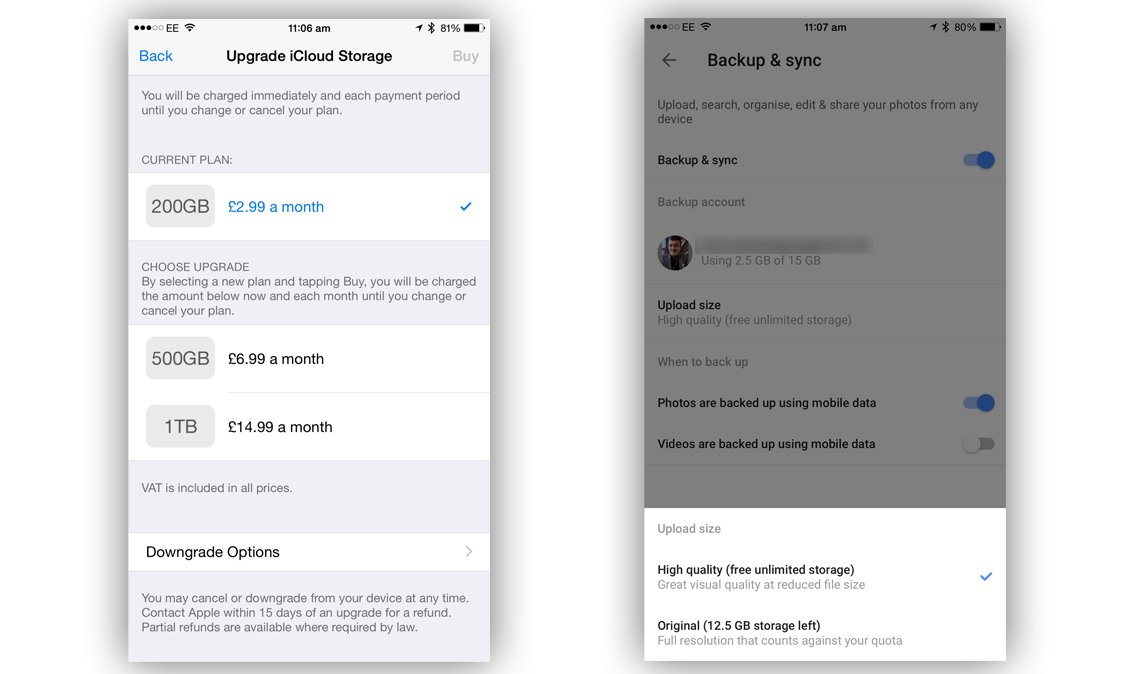
But why pay? Google has caught on to the frustrations of cloud service users and has offered something that the likes of Apple, Dropbox and Microsoft can"t (or won"t) compete with - completely unlimited photo and video storage, free of charge. Google Photos is available for iOS, Android and has a Mac and PC uploader so you can back up your entire photo library across all devices.
There are limits to what Google can offer though; the uploaded images and videos aren"t the original files, but are instead compressed copies. Google claims that it isn"t standard compression and that while the file size is minimised, there"s little or no affect on image quality. Magic, eh? There"s also a limit on resolution - 16MP for photos and 1080p HD for videos, and while you can still upload larger files, they"ll be shrunk down.
Of course, you still have the option to upload full quality original files, but this will eat up your Google Drive storage, which does cost you (you get 15GB for free though, Apple only gives 5GB free space in iCloud).
Security and Privacy
So the real question is "what is Google getting out of this?" because we all know that nothing in life is actually free. Google analyses the photos and assigns them metadata that can be used to build a better picture of the user, which is then used to serve more relevant ads. And of course, more relevant ads mean more clicks and more money for Google.
Apple has a very different stance on mining personal data, believing that people have a fundamental right to security and privacy. Speaking at EPIC"s Champions of Freedom event in Washington, Apple CEO Tim Cooke had the following to say about Google"s new service:
"We believe the customer should be in control of their own information. You might like these so-called free services, but we don"t think they"re worth having your email, your search history and now even your family photos data mined and sold off for God knows what advertising purpose. And we think some day, customers will see this for what it is."
In response to claims of monetising the service, a Google spokesperson told us:
"Our first priority - as with most products that Google builds - is to get the user experience right. So we have no monetisation plans at this time. Google Photos will not use images or videos uploaded onto Google Photos commercially for any promotional purposes, unless we ask for the user"s explicit permission."
No comments:
Post a Comment